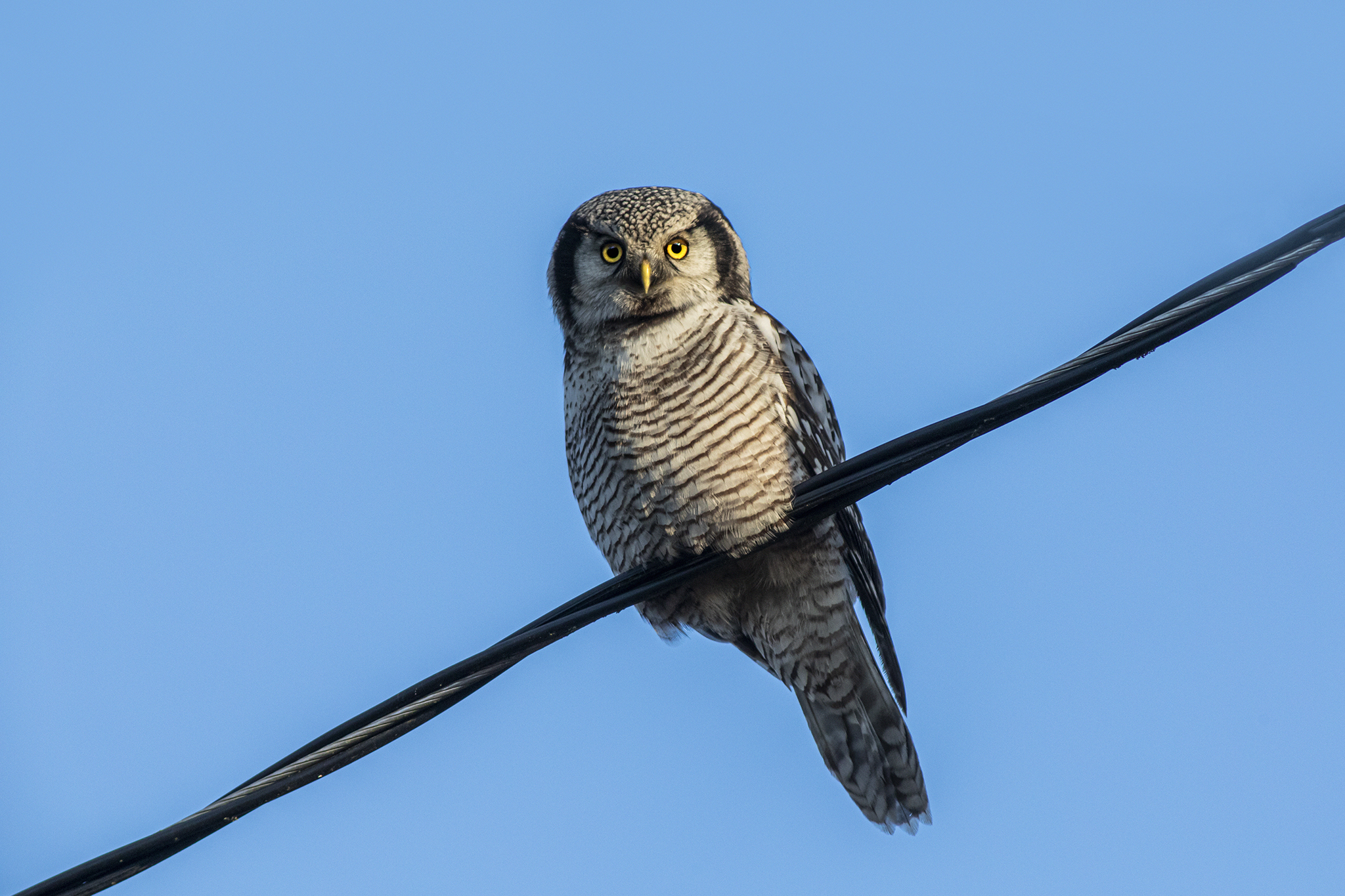The Northern Hawk-owl (Surnia ulula) is a distinctive and fascinating bird of prey that inhabits the boreal forests of the Northern Hemisphere, including regions of Europe, Asia, and North America. It is known for its hawk-like appearance, diurnal hunting habits, and keen eyesight.
Key Characteristics:
- Appearance:
- Size: Medium-sized owl, with a length of 36-45 cm (14-18 inches) and a wingspan of 69-82 cm (27-32 inches).
- Coloration:
- The upperparts are brown with white spots, and the underparts are pale with brown streaking.
- Its face is marked by a white facial disc with dark brown borders, and it lacks the typical ear tufts of many owl species.
- Its yellow eyes are strikingly similar to those of hawks, giving it its name.
- Tail: It has a long, wedge-shaped tail, which also contributes to its hawk-like silhouette.
- Behavior:
- Diurnal: Unlike most owls, the Northern Hawk-owl is mainly active during the day, especially at dawn and dusk. Its excellent eyesight, similar to that of hawks, allows it to hunt in daylight.
- Hunting: It primarily hunts small mammals, especially voles, but it also preys on birds. It uses both sight and sound to locate prey, often perching on high trees or poles and diving down swiftly to capture it.
- Territorial: Males are known to be highly territorial, especially during the breeding season. They defend their territory through vocalizations and sometimes physical confrontations.
- Habitat:
- Range: The Northern Hawk-owl is found across the boreal forests of North America, Scandinavia, and Russia. It prefers open coniferous forests, often near wetlands, and avoids dense woodlands.
- Nesting: It nests in tree cavities or old woodpecker holes, particularly in dead trees. They may also use nest boxes in areas where natural sites are scarce.
- Diet:
- Mammals: The majority of its diet consists of small mammals, especially voles, but it may also hunt hares, squirrels, and other small rodents.
- Birds: It also preys on small birds, especially during the winter when mammals are harder to find.
- Hunting Tactics: It uses a sit-and-wait hunting strategy, often observing from a high perch before swooping down on its prey with precision.
- Breeding:
- Mating: The breeding season occurs in late winter or early spring. Males attract females with a series of high-pitched calls and aerial displays.
- Clutch Size: The female typically lays 3-13 eggs, depending on food availability. She incubates the eggs for about a month, while the male provides food.
- Fledging: The chicks fledge after about 25-30 days but remain dependent on the parents for a few more weeks as they learn to hunt.
- Conservation Status:
- The Northern Hawk-owl is not currently considered threatened, but its population may fluctuate in response to prey availability. It is more commonly seen during population booms of small mammals like voles.
- Habitat loss, particularly from logging and deforestation, poses a potential threat to some populations, though the species is generally considered stable.
Conclusion:
The Northern Hawk-owl (Surnia ulula) is a unique and striking bird of prey, with characteristics that blend both owl and hawk traits. Its diurnal activity, excellent hunting abilities, and adaptability to boreal habitats make it a fascinating species. It thrives in cold, northern forests, often seen perched in high trees, scanning for prey during daylight hours. Though not endangered, conservation efforts to preserve its natural habitat are essential for maintaining healthy populations.
Views: 606
Subscribe to the newsletter:
